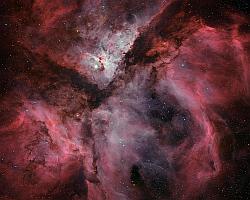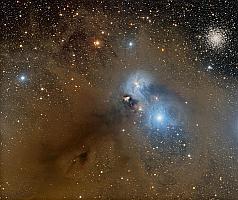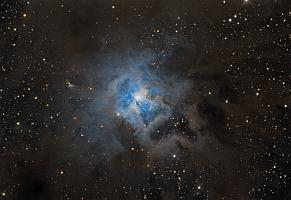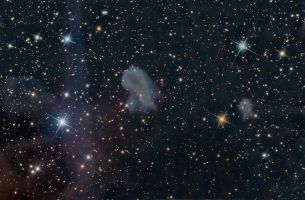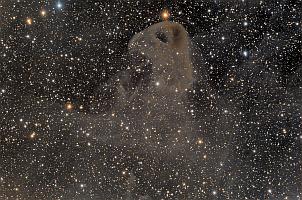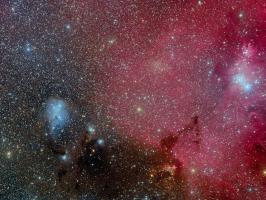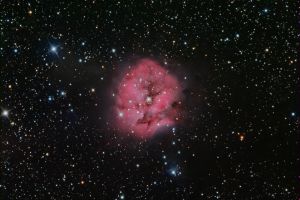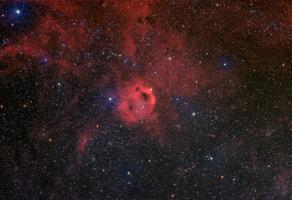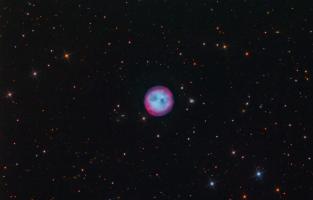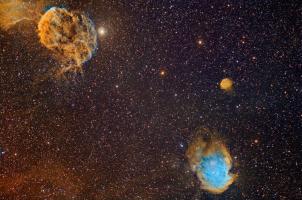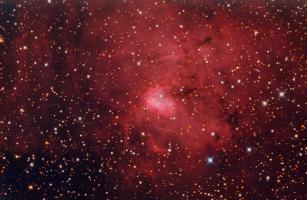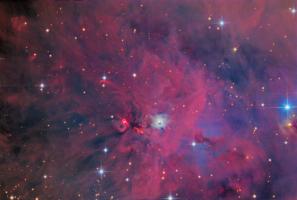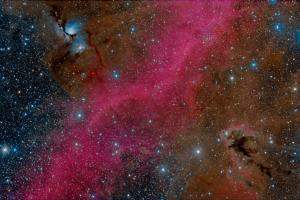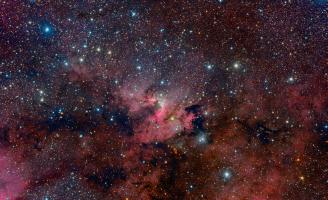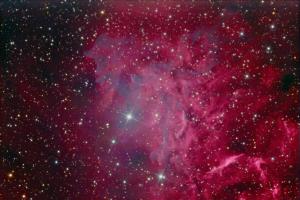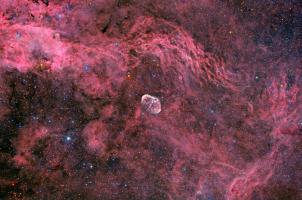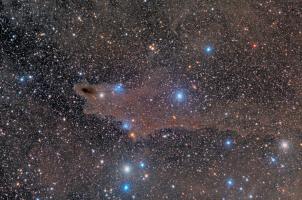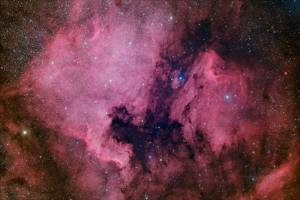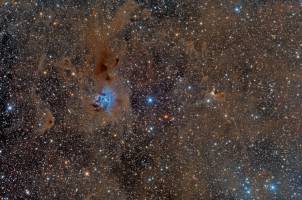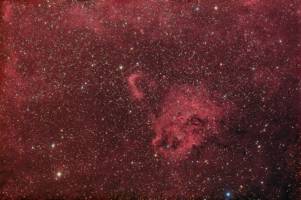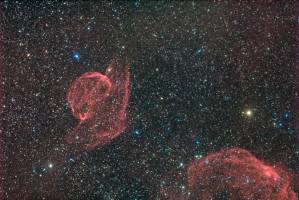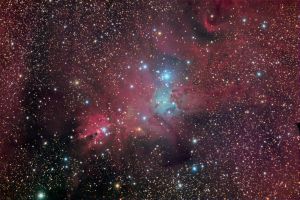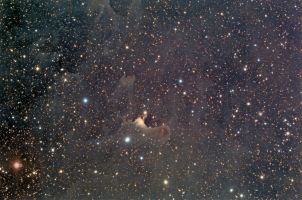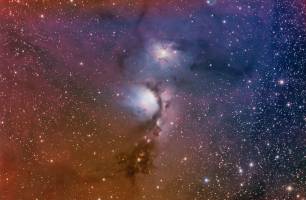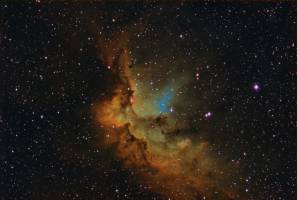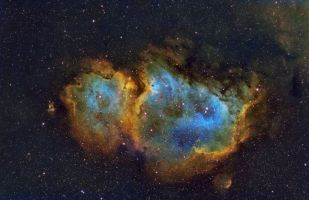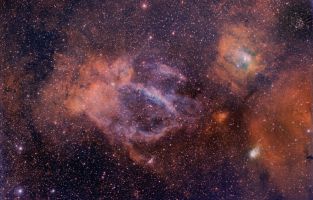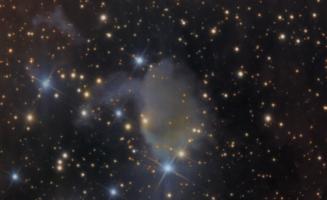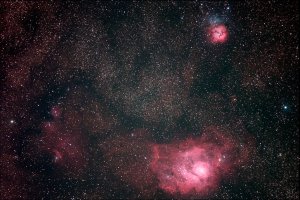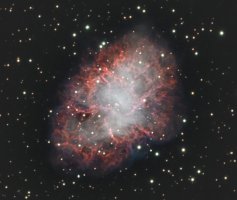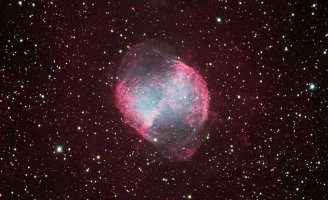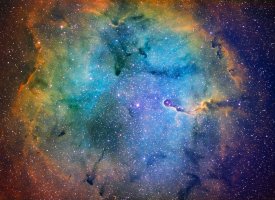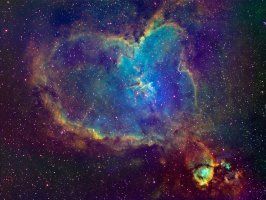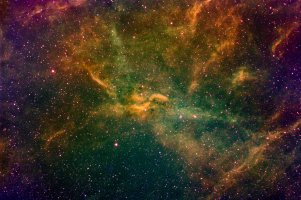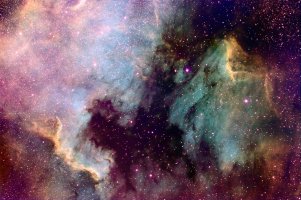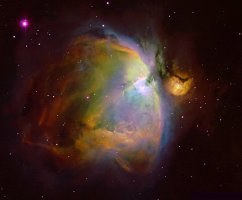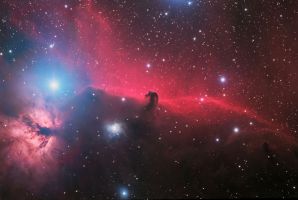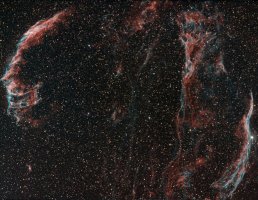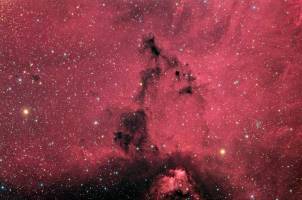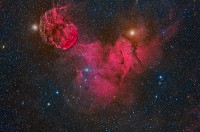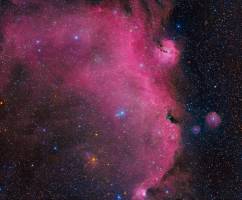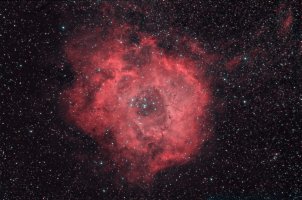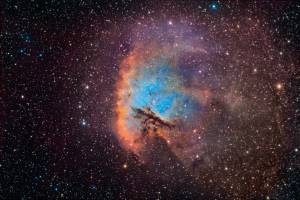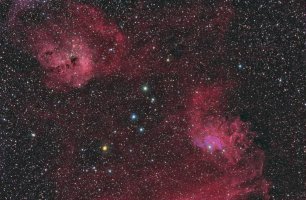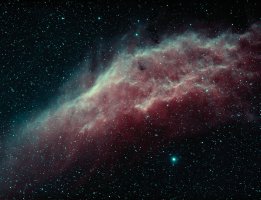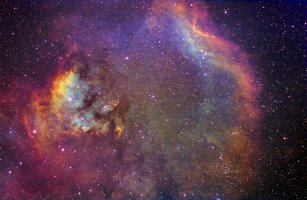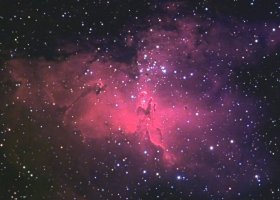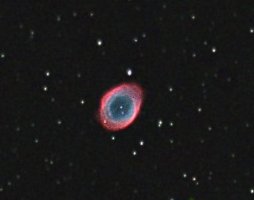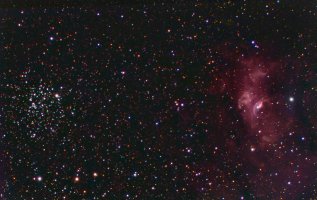Nebulae
Nebulae are among my most successful body of work. This is especially true for narrowband images of nebulae, with the dense narrowband filters able to cut through the haze of light pollution in my back yard.
Most nebulae are challenging to see from my back yard because of the light pollution present. Regular color imaging (RGB) is also tough because it can be a challenge to differentiate faint regions of the nebula from gradients brought on by light pollution.
There are several different types of nebulae, all of which are covered in this site:
|
Emission Nebulae: these are huge clouds of gas (and some dust) that glow like neon lights from the ultraviolet radiation of energetic stars near or inside them
Reflection Nebulae: these are huge clouds of dust that reflect light from nearby bright stars Planetary Nebulae: these are short-lived nebulae that are the shells cast off from dying stars having a mass similar to (and up to a few times) that of our Sun. They represent the phase after a star goes through its red giant phase and is on its way to becoming a white dwarf. Similar to emission nebulae, they shine from energetic radiation being spewed by the rapidly shrinking core of the collapsing stellar remnant as that fragment turns into a white dwarf Supernova Remnants: these are the materials cast off by a star several times the mass of the Sun that blew up in a titanic eruption as their short lives ended Dark Nebulae: these are huge clouds of dust that obscure the light of stars within or behind them, and appear as inky blotches in the otherwise star-filled night sky |

